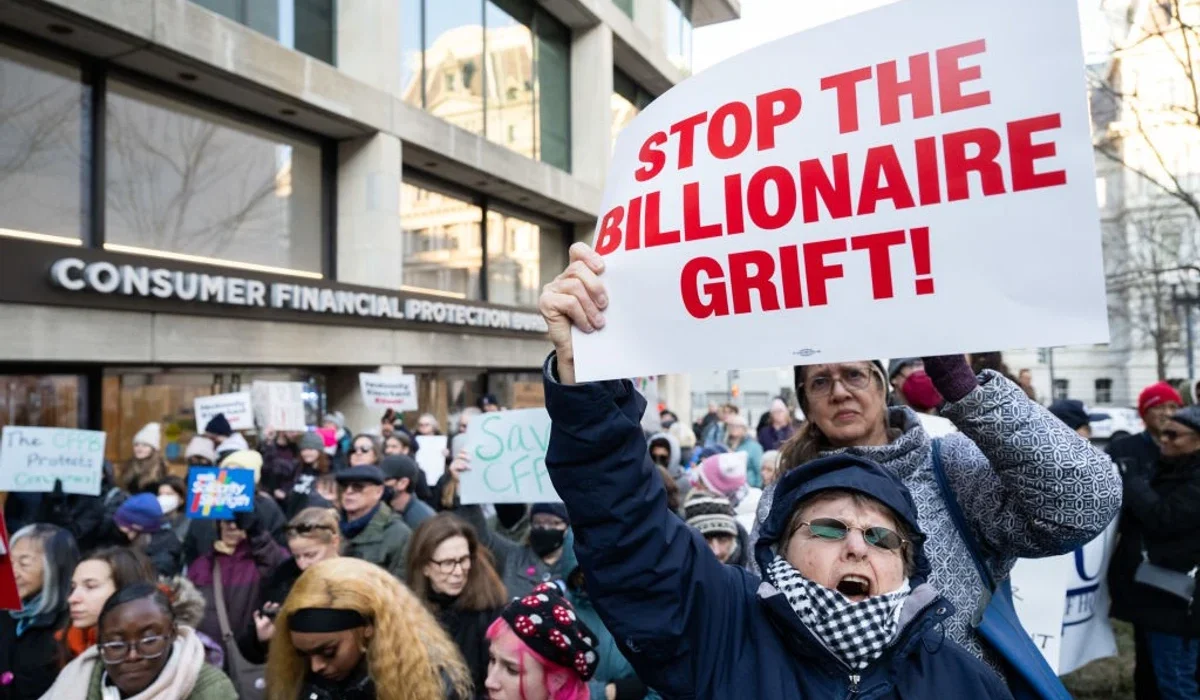
The New Shape of Trump Resistance: A Political Awakening
Reflecting back to 2017, I remember the palpable energy during the Women’s March when millions rallied against the newly inaugurated Trump. Fast-forward to today, an equally crucial moment arises as we see a revitalized movement forming in response to his second term—not through grand marches, but in packed town halls across the country.
From the Women’s March to the People’s March
The political landscape has shifted dramatically over the past few years. In January 2017, the Women’s March took place. It was a massive event, with millions of people marching across the United States. They protested against Donald Trump and his policies. Fast forward to now, and we see a different scene. The recent protests, while smaller in scale, are just as significant. What does this say about our current political engagement?
Comparison of Turnout and Purpose
When we look back at the Women’s March, it was a powerful display of unity. Millions gathered to voice their concerns. The purpose was clear: to resist the policies of a new administration that many viewed as threatening. Now, we see smaller gatherings, like the recent People’s March. These protests have a different tone. They are more focused on specific issues, rather than a broad resistance.
- Women’s March (2017): Millions participated, united against Trump’s agenda.
- People’s March (2023): Smaller crowds, but focused on specific causes like climate change, LGBTQ+ rights, and social justice.
It’s interesting to note that while the numbers are smaller now, the passion remains. People are still engaged, but perhaps in a more targeted way. This evolution shows how activism can adapt to the times. Are we seeing a shift from mass protests to more localized, issue-based activism?
The Role of Community and Grassroots Activism
Community and grassroots activism have become central to the current resistance. Local groups are mobilizing people to take action. They are organizing town halls, rallies, and discussions. This approach fosters a sense of belonging and empowerment. It’s about more than just showing up; it’s about building connections.
For example, during recent town halls, attendance has surged. People are eager to voice their concerns directly to their representatives. Just think about it: a Republican senator faced boos from constituents. This shows that people are no longer passive. They are demanding accountability. It’s a shift from the larger, more generalized protests to a more personal, community-driven approach.
Personal Stories and Observations
As someone who has witnessed this evolution, I find it fascinating. I remember the energy of the Women’s March. The feeling of being part of something bigger. But now, I see friends and family engaging in their communities. They are attending town halls, writing letters, and organizing local events. It’s inspiring.
One story that stands out is from a friend who attended a recent rally for climate action. She said, “It felt different. The crowd was smaller, but everyone was there for a reason. We shared our stories, and it felt powerful.” This sentiment echoes across many gatherings. People are connecting on a personal level, sharing their experiences, and building a community of support.
Insights on the Evolution of Political Engagement
Activism is changing. The Women’s March was a moment of collective outrage. Now, we see a more nuanced approach. People are focusing on specific issues that matter to them. This shift is not a sign of defeat; rather, it reflects a deeper understanding of how change happens. It’s about local action leading to national impact.
As Ali Velshi noted, “Something is happening.” This statement rings true. While we may not see the same massive crowds as before, the movement is alive. It’s evolving. People are finding their voices in new ways. They are no longer waiting for a single event to rally around. Instead, they are creating their own spaces for dialogue and action.
In conclusion, the transition from the Women’s March to the People’s March illustrates a significant shift in political engagement. While the scale may be different, the commitment to activism remains strong. It’s a testament to the resilience of communities and the power of grassroots movements. As we move forward, let’s continue to support one another and stay engaged in the fight for justice and equality.
The Resurgence of Town Halls: A Platform for Voices
Have you noticed the buzz around town halls lately? It’s hard to ignore. There’s been a significant increase in attendance at these events, and it’s happening across the political spectrum. Both Republican and Democratic representatives are seeing packed venues. This is a remarkable shift from what we’ve come to expect in recent years.
Unusual Turnout Numbers
Let’s look at some specific examples. Recently, Senator Chuck Grassley held a town hall that was *packed*. It’s not typical for a town hall to draw such a crowd. In fact, as Ali Velshi pointed out,
“Town halls are typically not so well-attended.”
But Grassley’s event was an exception. It was filled to the brim with constituents eager to voice their concerns.
Similarly, Democratic Representative Kelly Morrison hosted a town hall that attracted around 2,000 attendees. That’s a huge turnout! Governor Tim Walz also saw impressive numbers, with over 1,500 people showing up for his town hall. Even in California, Democratic Representative Salud Carbajal had about 1,000 attendees at his event. These figures are unusual for this political climate, where many have felt disillusioned and disconnected from their representatives.
Fostering Dialogue
So, why are these town halls so important? They serve as a vital platform for dialogue between citizens and lawmakers. In a time when many feel unheard, these events allow constituents to express their frustrations and hopes directly to their elected officials. It’s a chance for lawmakers to listen, engage, and respond to the needs of their communities.
Moreover, the recent uptick in attendance indicates a growing desire among the public to participate in the political process. People are no longer content to sit back and watch from the sidelines. They want to be heard. They want to hold their representatives accountable. This is a crucial development in our democracy.
Shifting Dynamics
We’ve witnessed a shift from lackluster attendance to packed venues. It’s a clear sign that people are waking up and taking action. The political landscape is changing, and town halls are at the forefront of this movement. They are becoming a space where citizens can challenge their representatives and demand answers.
Interestingly, some Republican leaders have responded to this surge in attendance with caution. They’ve faced tough questions and sharp criticisms at their events. In fact, some GOP leadership has advised members to avoid town halls altogether. This reaction speaks volumes about the current political climate. It shows that constituents are not afraid to voice their concerns, even if it means confronting their representatives.
Empty Chair Town Halls
In response to representatives who avoid these confrontations, some progressive groups have organized “empty chair town halls.” These events invite constituents to share their concerns with an empty chair representing their absent representative. It’s a powerful statement about accountability and engagement.
While we may not see demonstrations on the same scale as the 2017 Women’s March, something significant is happening. We are witnessing a new kind of movement taking shape. It’s a movement that emphasizes the importance of showing up and fighting for the issues that matter. Leaders like Senator Bernie Sanders and Representative Alexandria Ocasio-Cortez are leading the charge, drawing massive crowds to their rallies. Just think about that: tens of thousands of people are showing up for political events, and the midterms are still over a year away. That’s unprecedented!
As we continue to observe this resurgence of town halls, it’s clear that they are more than just meetings. They are platforms for voices. They are spaces for dialogue, accountability, and change. The increase in attendance signals a renewed interest in civic engagement. It’s a reminder that our democracy thrives when citizens actively participate. So, let’s keep the momentum going. Let’s continue to show up, speak out, and make our voices heard.
Progressive Leaders Leading the Charge
In today’s political climate, the role of progressive leaders is more crucial than ever. Figures like Bernie Sanders and Alexandria Ocasio-Cortez (AOC) are at the forefront of mobilizing the resistance against the current administration. Their recent rallies have not only drawn massive crowds but have also ignited a renewed sense of activism among citizens. Let’s dive into their impact and how we can engage with these movements.
Mobilizing the Resistance
Bernie Sanders and AOC have become symbols of hope for many. They represent a shift towards a more inclusive and equitable political landscape. Their rallies have become a beacon for those who feel unheard and marginalized. Just consider the numbers:
- 34,000 attendees at Sanders’s Denver rally
- 23,000 in Tucson
- 15,000 in Tempe
These figures are not just numbers; they reflect a growing movement. As
“We’re seeing a different kind of movement building right now,”
said Ali Velshi. This movement is characterized by its energy and determination to challenge the status quo.
Significance of Large Turnouts
The significance of these large turnouts cannot be overstated. They indicate a shift in political engagement. People are no longer sitting on the sidelines. They are stepping up to voice their concerns and demands. This is especially important as we approach the midterms, which are still over a year away. The enthusiasm shown at these rallies is unprecedented.
Moreover, these gatherings serve as a platform for discussing critical issues. From healthcare to climate change, the topics raised resonate deeply with attendees. They are not just there for the spectacle; they are there to engage in meaningful dialogue. This is a stark contrast to previous years when political apathy was rampant. Now, people are actively seeking out ways to participate in the democratic process.
Engaging with Progressive Movements
So, how can we engage with these progressive movements? Here are a few recommendations:
- Attend Rallies: Show up at local events. Your presence matters. It sends a message that you care about the issues at hand.
- Contact Your Representatives: Don’t hesitate to reach out. Let them know your thoughts on policies and initiatives. Phone lines are ringing off the hook, and that’s a good thing!
- Join Local Organizations: Many grassroots organizations are working tirelessly to promote progressive values. Get involved and lend your voice to the cause.
- Educate Yourself: Stay informed about the issues. Knowledge is power, and understanding the nuances of policies can help you advocate more effectively.
By taking these steps, we can contribute to the momentum that Sanders and AOC are building. It’s about creating a community of engaged citizens who are ready to fight for change.
Looking Ahead
The importance of progressive leadership in today’s political landscape cannot be ignored. As we witness the resurgence of activism, it’s clear that leaders like Sanders and AOC are not just rallying supporters; they are inspiring a generation to take action. Upcoming events and initiatives spearheaded by these leaders will likely continue to draw large crowds and foster discussions on vital issues.
In conclusion, the political landscape is shifting. The energy surrounding progressive movements is palpable. We have the opportunity to be part of something larger than ourselves. By engaging with these movements, we can help shape the future of our democracy. Let’s not miss this chance to stand up, speak out, and make our voices heard. Together, we can lead the charge for a better tomorrow.
TL;DR: This post highlights the transformation of the Trump resistance from massive protests to localized activism, underpinned by a sustained momentum for social change led by progressive figures.
Trump resistance movement, grassroots activism, Bernie Sanders rally, Alexandria Ocasio-Cortez, town hall politics, progressive leadership, post-2017 activism

